In 2013 Joke Lunsing made a decision. To be kind to herself. To focus on her own passion for a while.
During her recovery after a successful operation for a stomach, tumour Joke felt she had been given a second chance. She realised that she had been suppressing and ignoring her innate desire to work with hand stitch for more than 35 years!
In 2015 she started work on a textile project named The Felt Beehive both as a means of feeding her artistic instincts but also with the aim of raising awareness about the plight of bees. She collaborated with more than 50 others to create a 4.5-metre beehive covered with felt in just one year. When that project ended, she started experimenting with eco-printing and textile dyeing.
In 2017 Joke registered on TextileArtist.org’s online course Exploring Texture & Pattern with Sue Stone. But she didn’t find the early stages of the course easy.
‘I quickly realised embroidery and hand-stitching were not comfortable for me due to negative experiences in the 70s and 80s. During those times, my father lost work as an independent tailor. I learned his craft was cheap and had no future and value. Of course, growing up as a tailor’s daughter, I was busy with fabrics, needle, and thread from a very young age. But I lost my interest and pleasure in the craft in the early 80s.’
So, when she began work on the course, she was insecure. She felt the samples she was producing were stiff and unimaginative.
But working through the creative challenges of the course, Joke soon discovered a love of stitching that had been buried for many years; embroidery helped enrich her textile work and started having a positive impact on her feelings of self-worth.
‘My father passed away in April 2018, at the age of 93. I feel I honoured him with my hand-stitching and realised he had given me the love, talent, and patience for hand-stitching. Thanks to the course, I discovered what I had learned from my father had not disappeared at all.’
In addition, hand-stitching has become a means of practising mindfulness for Joke; ‘It allows me to be focused and calm. I love being in the bubble I create when I’m hand-stitching.’
In this interview, which is part of a series featuring members of the TextileArtist.org community, Joke tells us how questioning assumptions about her creativity has been key to unlocking her artistic potential, how she is discovering her own unique visual vocabulary by combining felt with hand stitch and how self-imposed limitations have transformed her process.
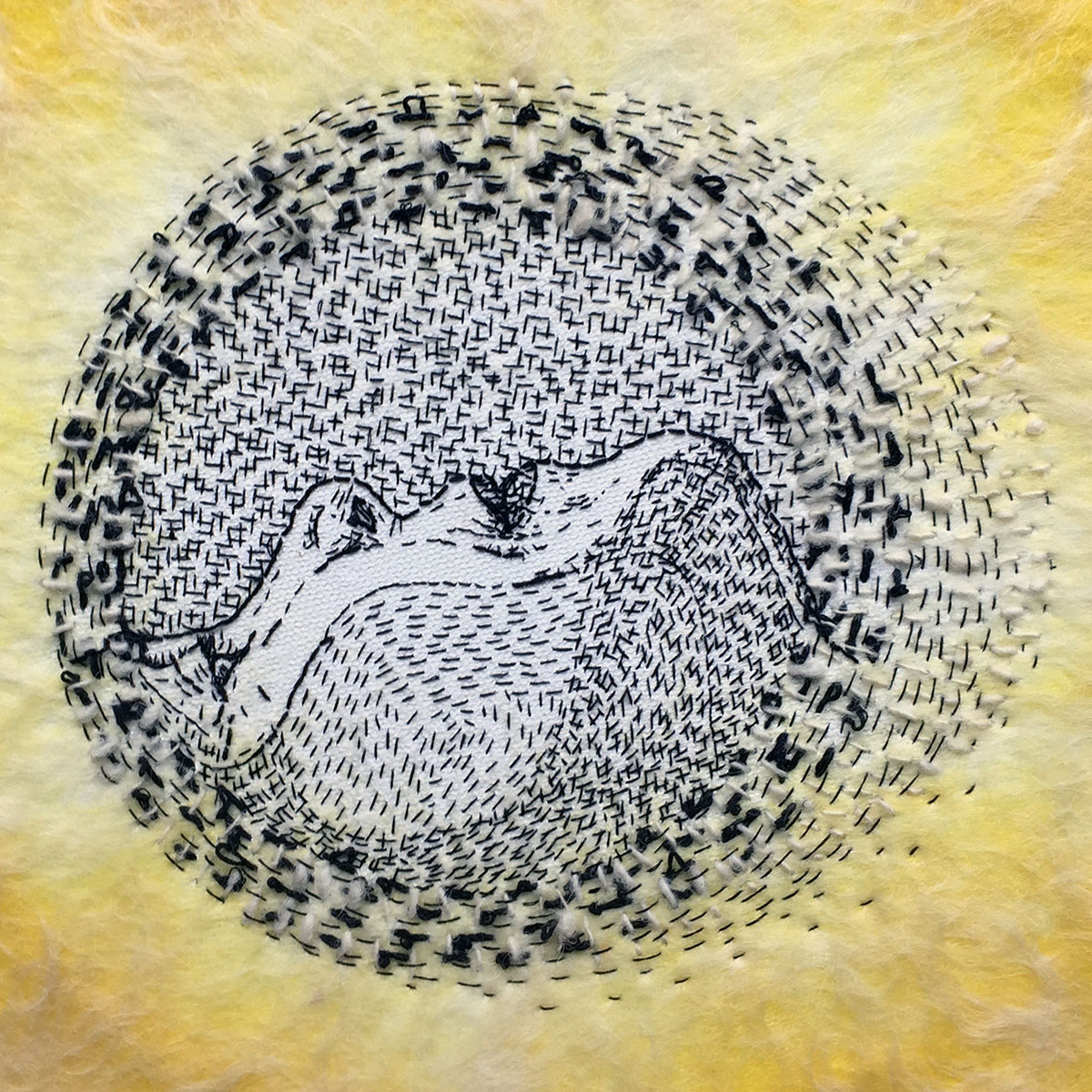
A creative detox
TextileArtist.org: Tell us a bit about your history with hand stitch
Joke Lunsing: Growing up as the daughter of a tailor, fabric and thread were part of my childhood. As a very young girl, I learned to hand stitch and make clothes for my dolls.
As a young adult my love of process, form, colour, materials and techniques grew, and following the end of my formal education in 1987, I started working in the creative industry in 1989.
I developed concepts for clothing and gifts that were manufactured all over the world. But after 15 years my mindset began to change; I realised I no longer made anything for myself and I felt conflicted because the industry I was working in was centred around making more and more money and relied on evils such as child labour.
I decided to detoxify. I took everything related to that life (textiles, sketch books, materials) to the waste dump. Then I put my creativity aside completely and, for more than ten years, did nothing with the skills I had used in what I considered to be a tainted career.
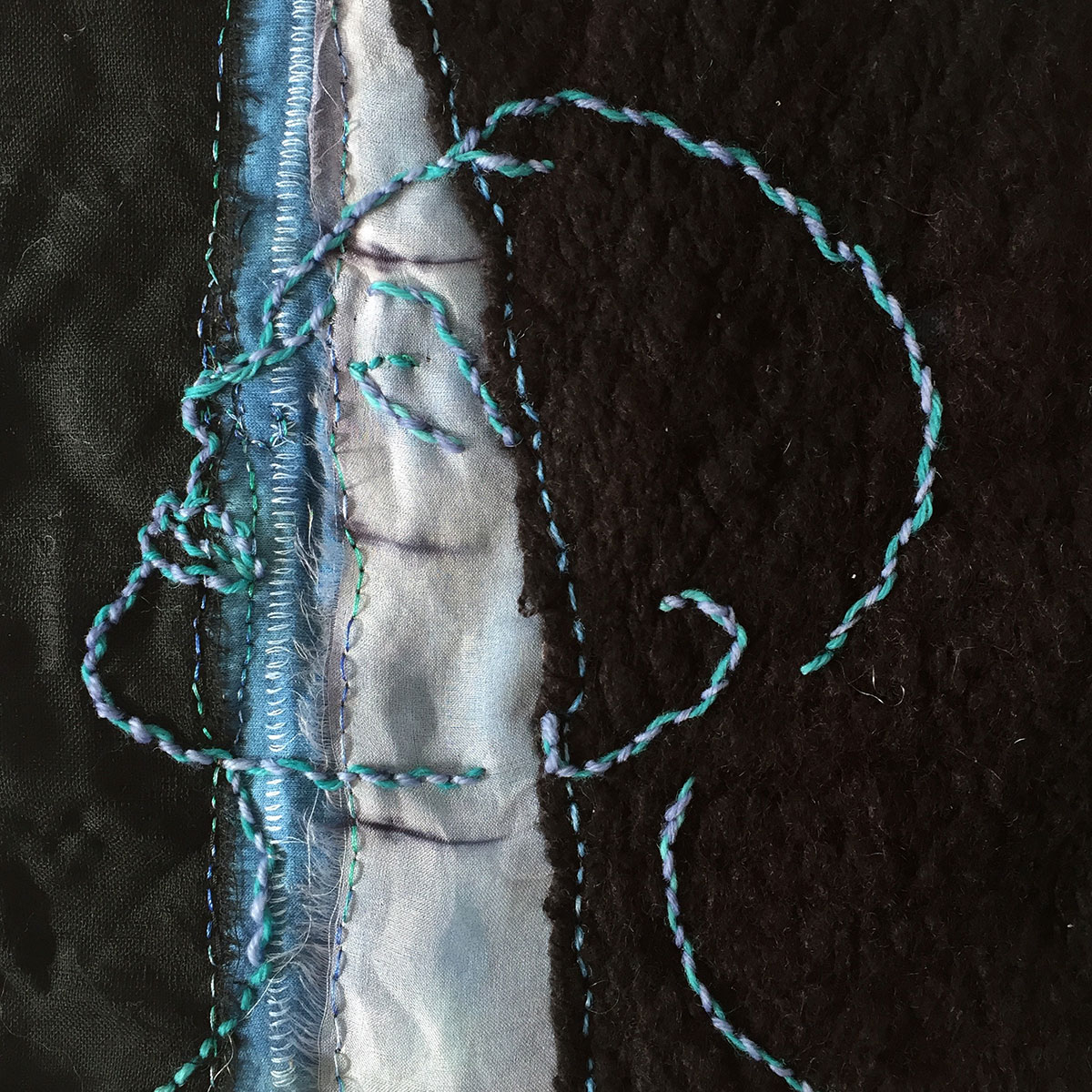
You’ve talked about having negative associations with hand stitch. Tell us a bit about where those associations came from.
When I was 18 years old, my teachers told me that my textile work was old-fashioned and had nothing to do with art. At that age I was very sensitive to this feedback.
Also in the art world at the time, and amongst the teachers and students where I studied, Textiles were seen as the poor relation to drawing and painting. So I moved away from embroidery and started to work more conceptually, more abstractly in other techniques and materials
I started making jewellery; abstract forms of thick saddle leather. These were still sewn but had no other association with hand-stitch.
In the 80s when I began working in the commercial sector, negativity towards textiles seemed to increase. The craft disappeared from education altogether and much of the work began to be outsourced to countries with very low production costs. Textiles and embroidery became associated with bargain prices.
I remember thinking how sad it was that my father, who was a tailor, had dedicated his life to a skill that nobody valued anymore.
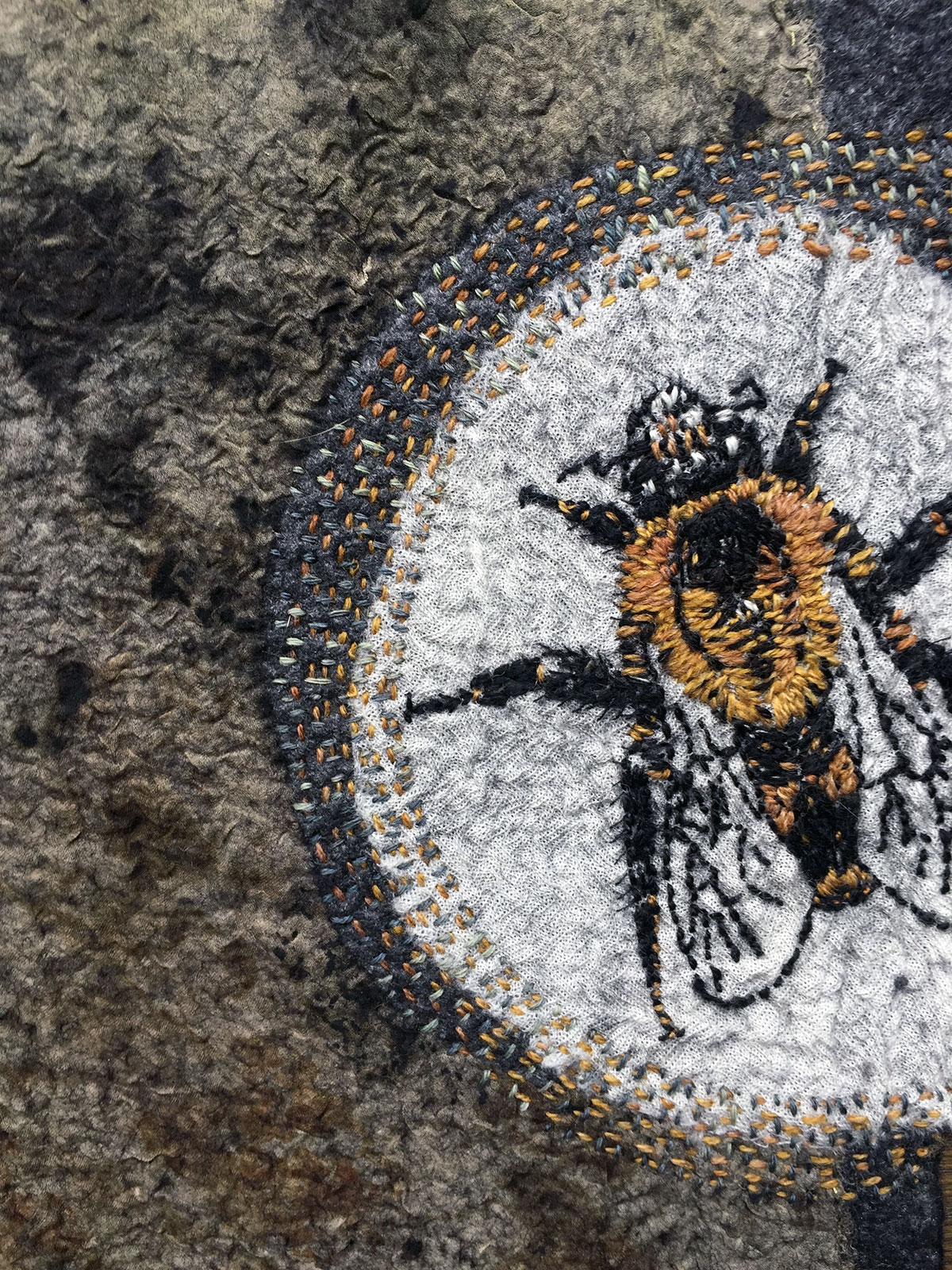
Conquering negative associations
How and why did you start to question those negative associations?
In 2013 my world turned upside down due to a stomach tumour. Luckily the operation to remove the tumour went well and I experienced a second chance during my recovery.
In 2014, after my illness, I made the decision that the time had come to take care of myself, to focus on my own needs. I realised due to work and family, my artistic talents and desire to work with textiles had been dormant for a long time.
I had to heal from deep wounds. And I instinctively knew the way to start that healing process was to pick up what I had left behind long ago.
In the beginning, I was stiff and insecure. But the artist in me was longing to be (re)born. I couldn’t fight it, no matter how strong my assumptions and judgements were. There was no way back.
So I turned to a course in felt, which propelled me into a textile-based project; The Felt Beehive. I collaborated with more than 50 others to create a 4.5-metre beehive covered with felt. The project was high profile and forced me into the spotlight as a textile artist. That was really the beginning.
My father passed away in April 2018, at the age of 93. I feel I honoured him with my hand-stitching and now realise he gave me a great gift that I had not always appreciated; the love, talent, and patience for hand-stitching.
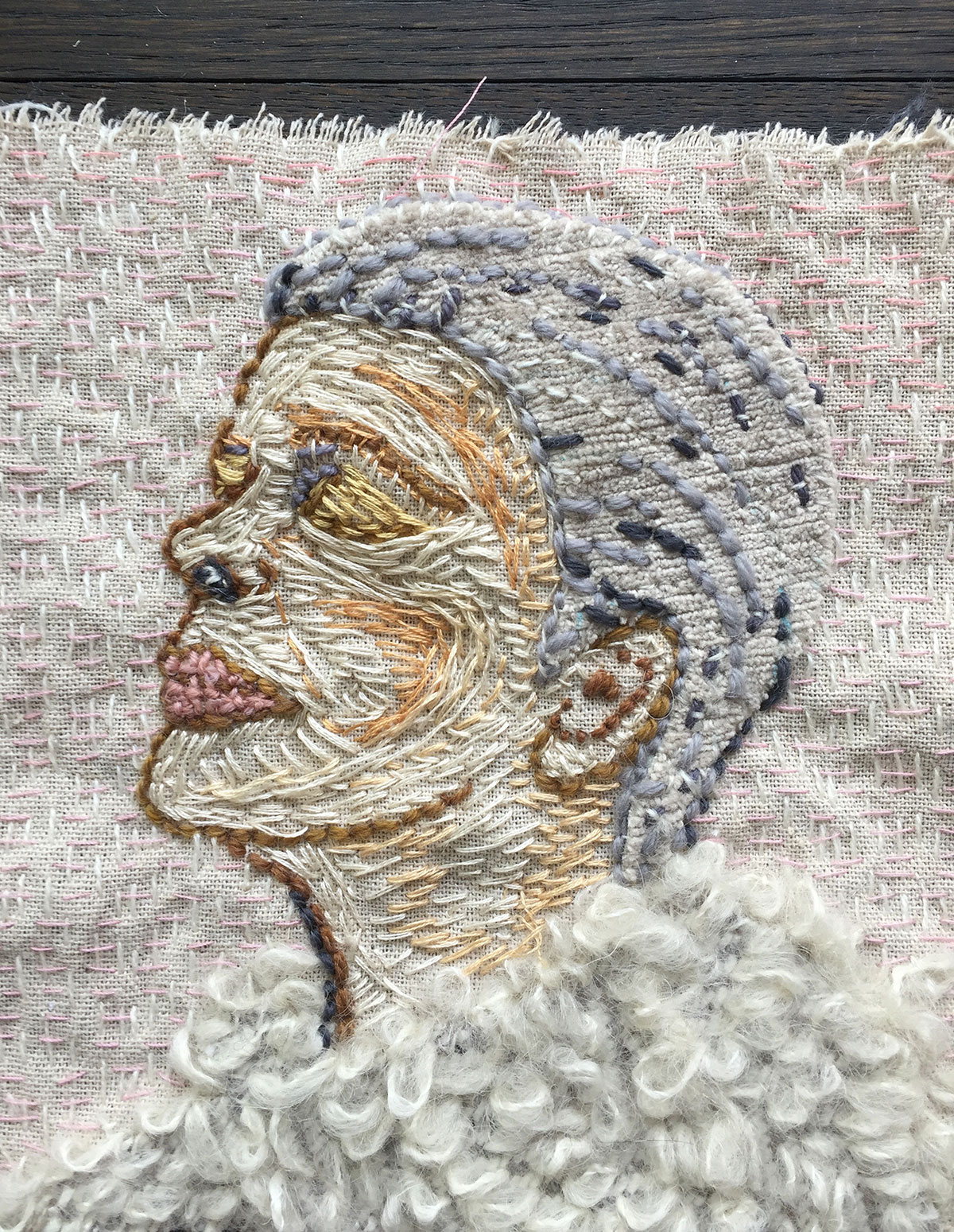
Tell us a bit about your personal journey and why you decided to take the Exploring Texture & Pattern course.
When The Felt Beehive project ended, I started experimenting with eco-printing and textile dyeing. I was hungry to explore more and more techniques and to build upon foundations that had been laid in my childhood.
I discovered Sue Stone’s work in 2017, and I signed up for her online course Exploring Texture & Pattern, which is all about experimenting with a few simple hand stitches.
But the old negative associations of hand stitch and embroidery soon reared their ugly heads and I quickly realised that I wasn’t comfortable.
So, when I started the course, I was insecure and it all felt very stiff, as is very evident in the first few samples I made in module one.
But the more I persisted, the more I rediscovered how joyful hand stitching can be. And just a few months later, embroidery has helped enrich both my textile work, my identity as an artist and my feelings about myself as a person. It just fits.

The artistic possibilities of hand stitch
What were your
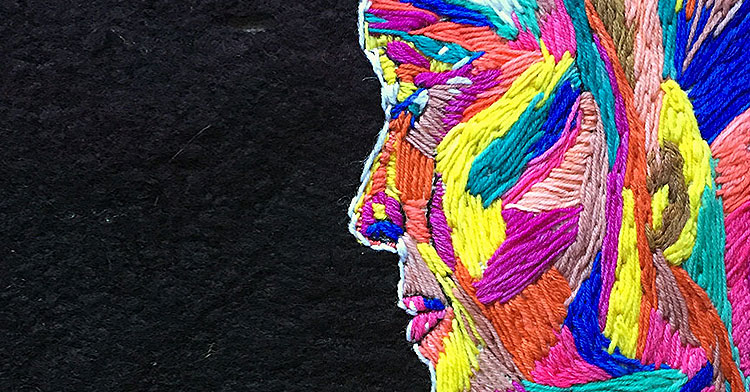
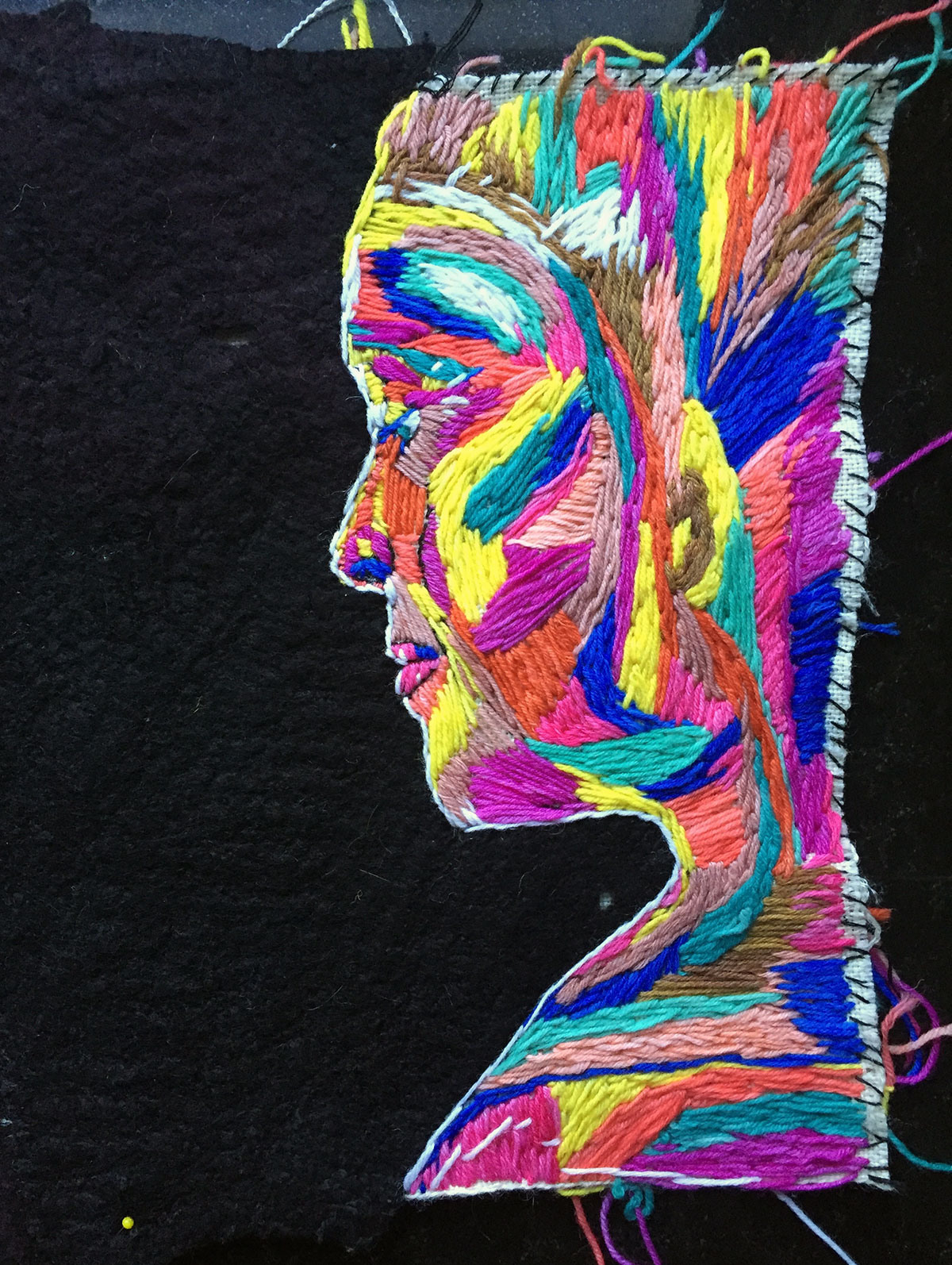
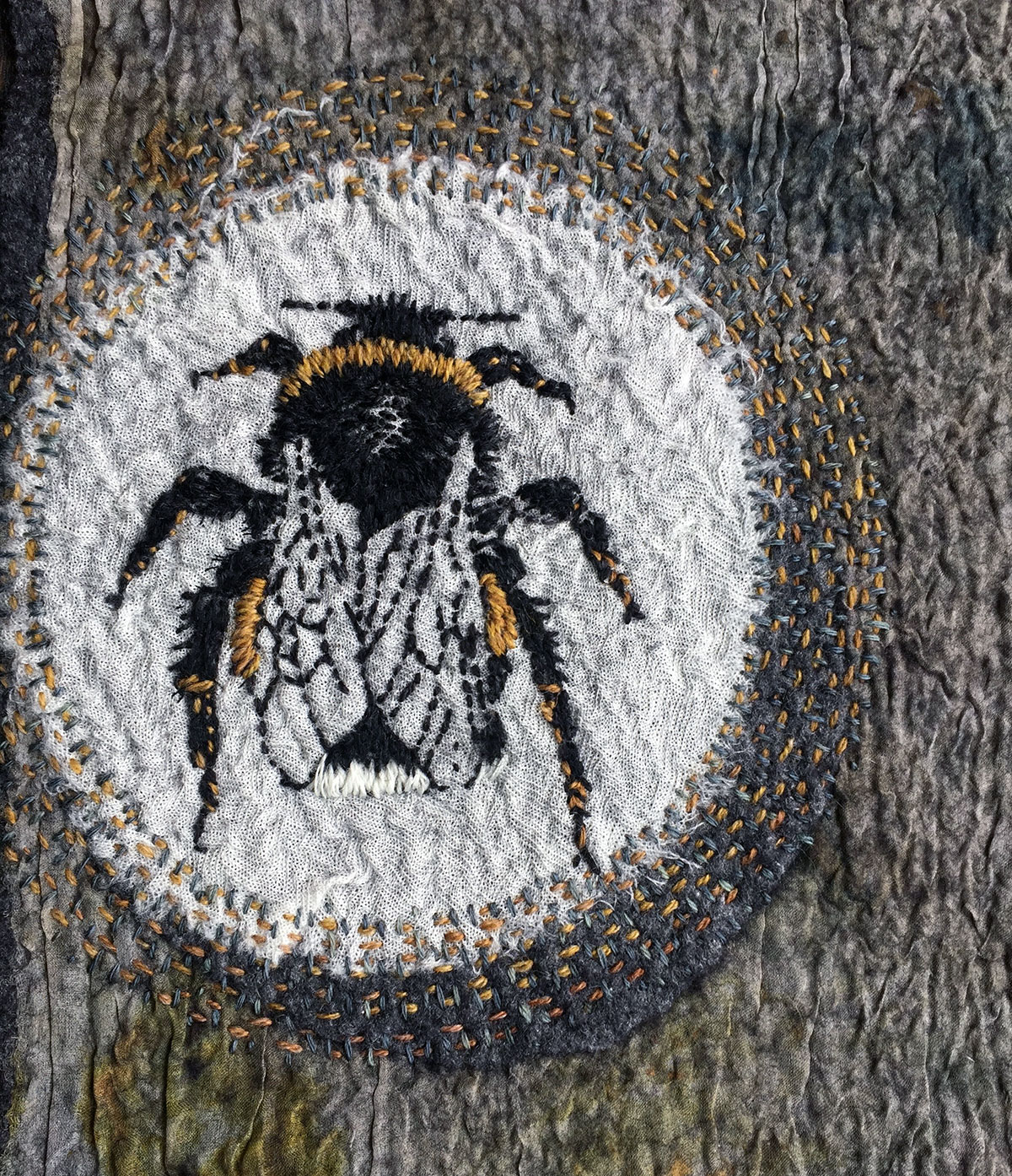
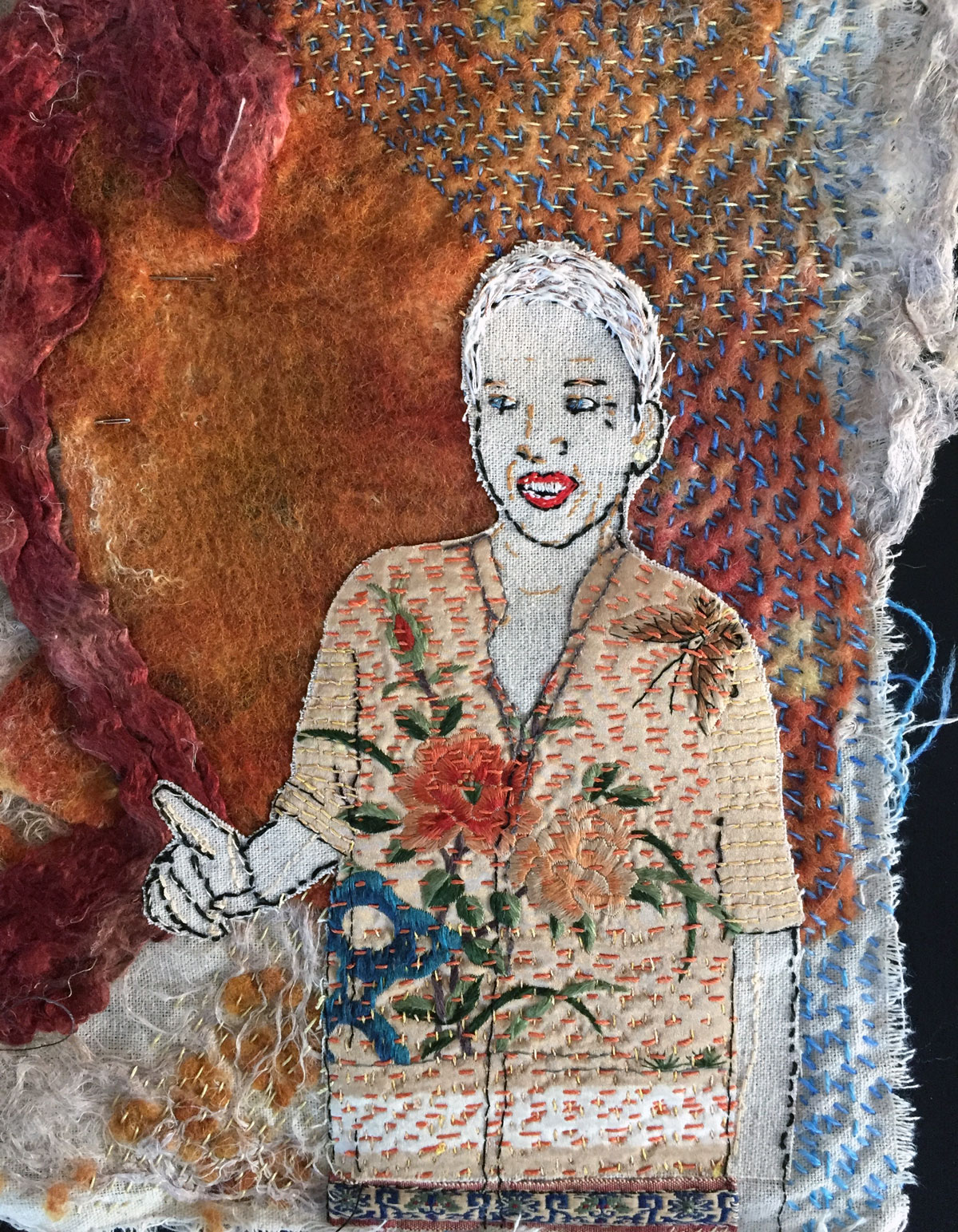
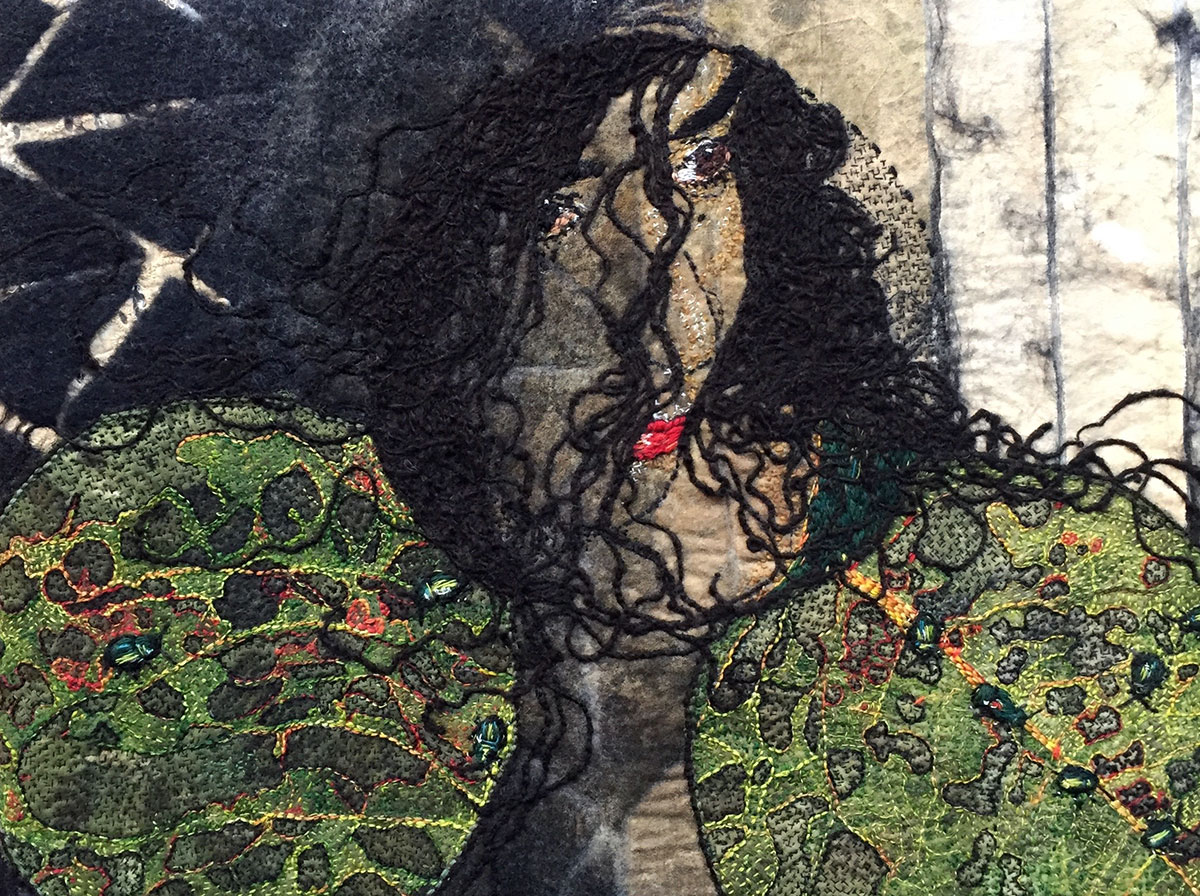
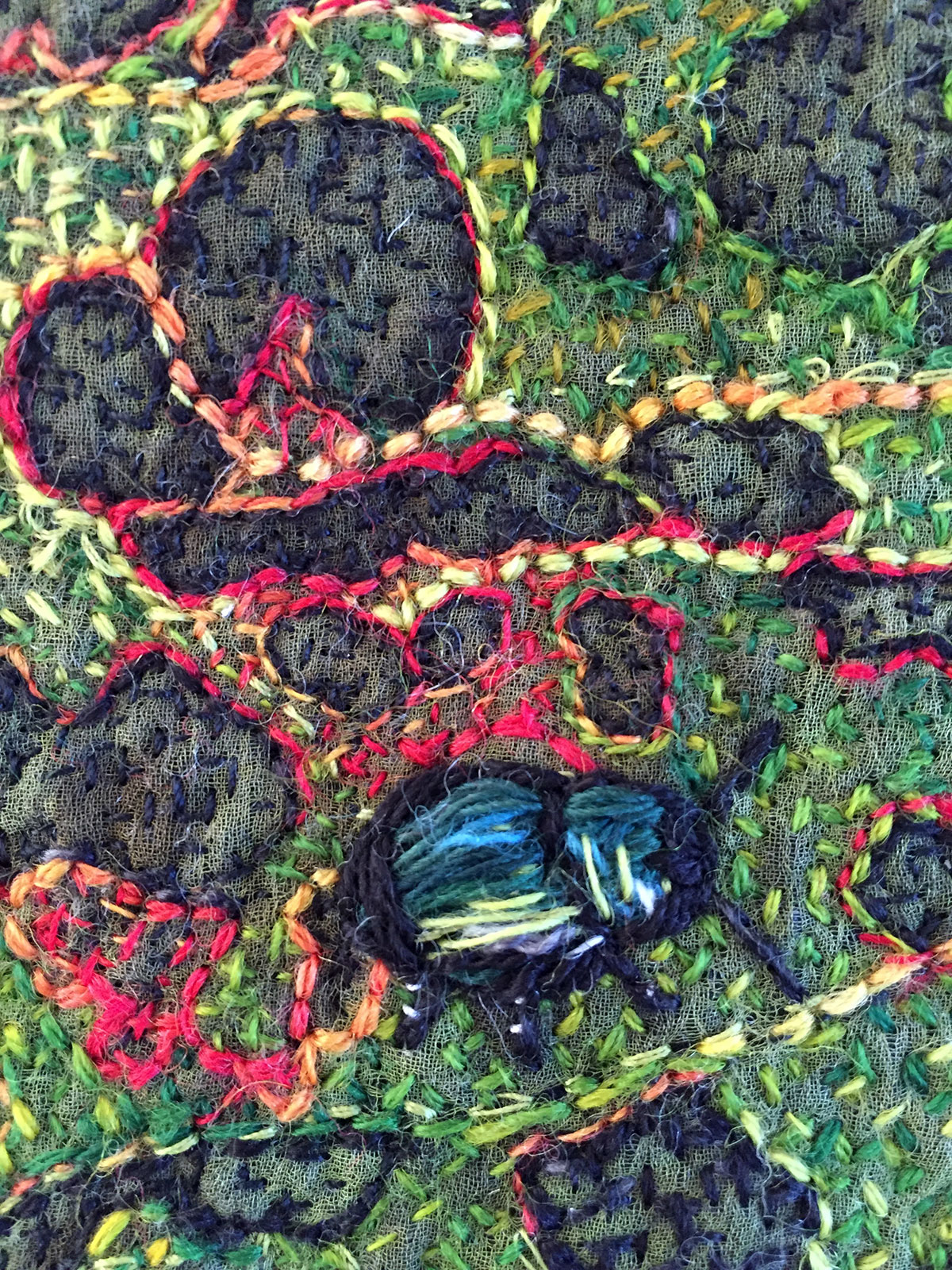
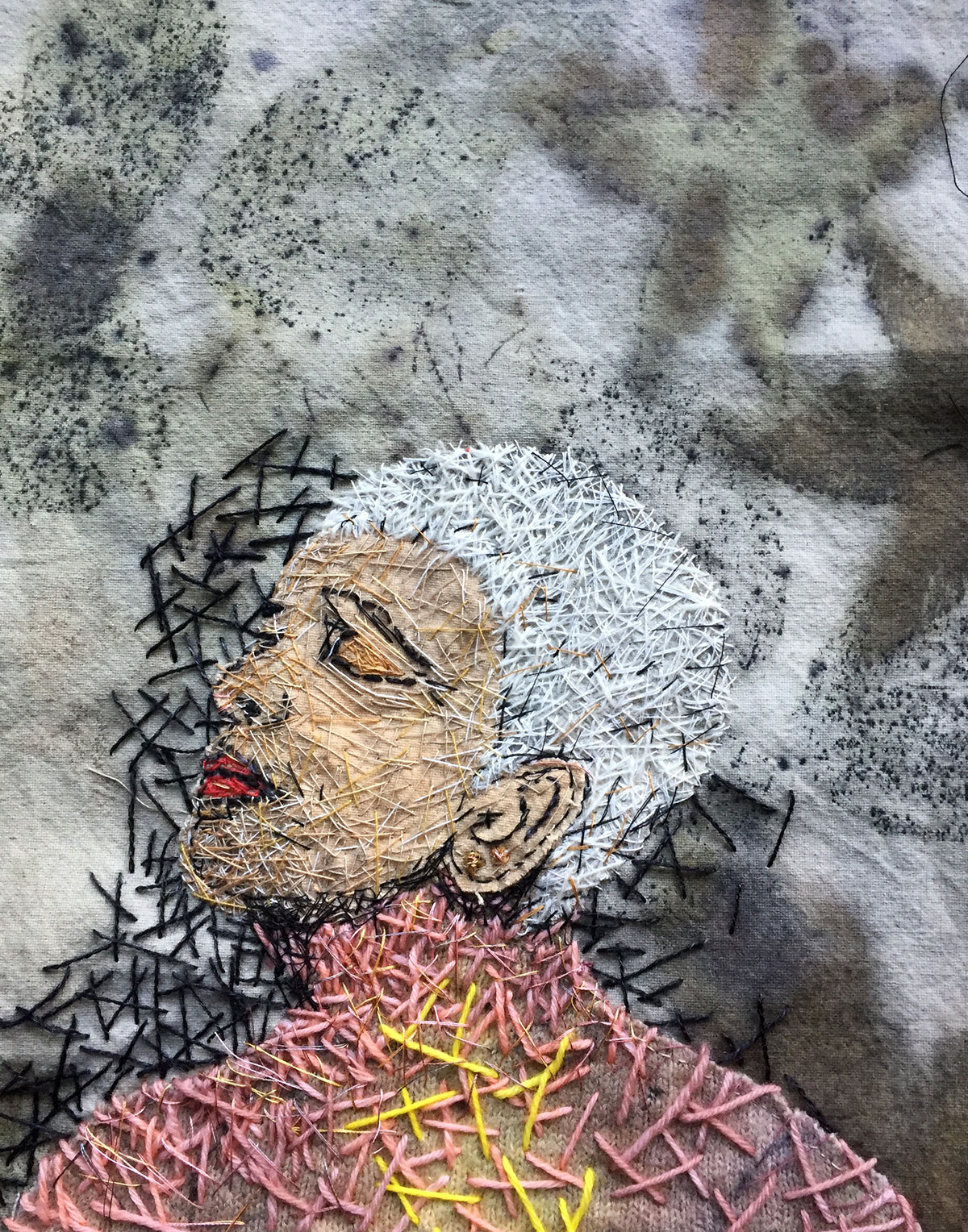
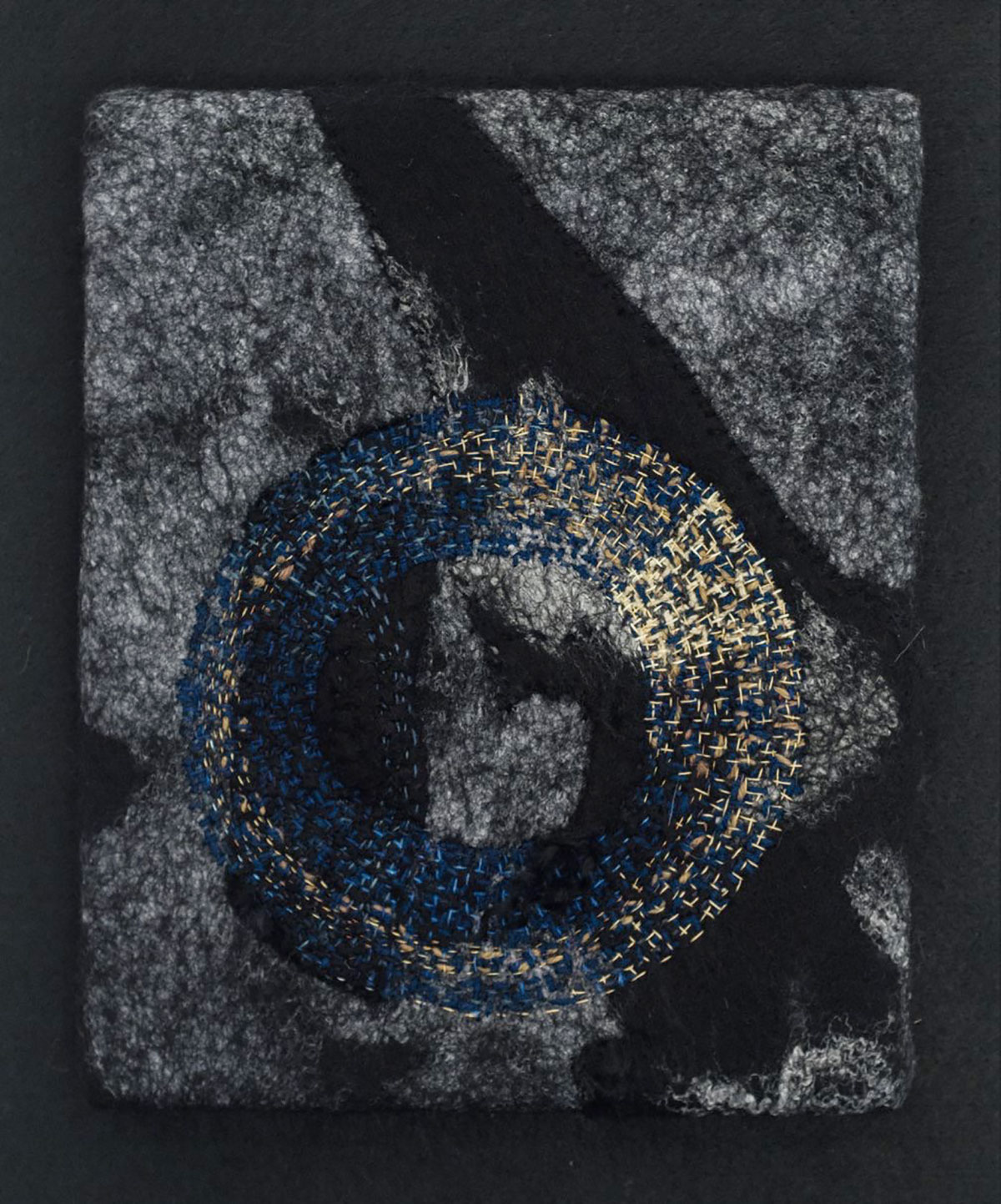
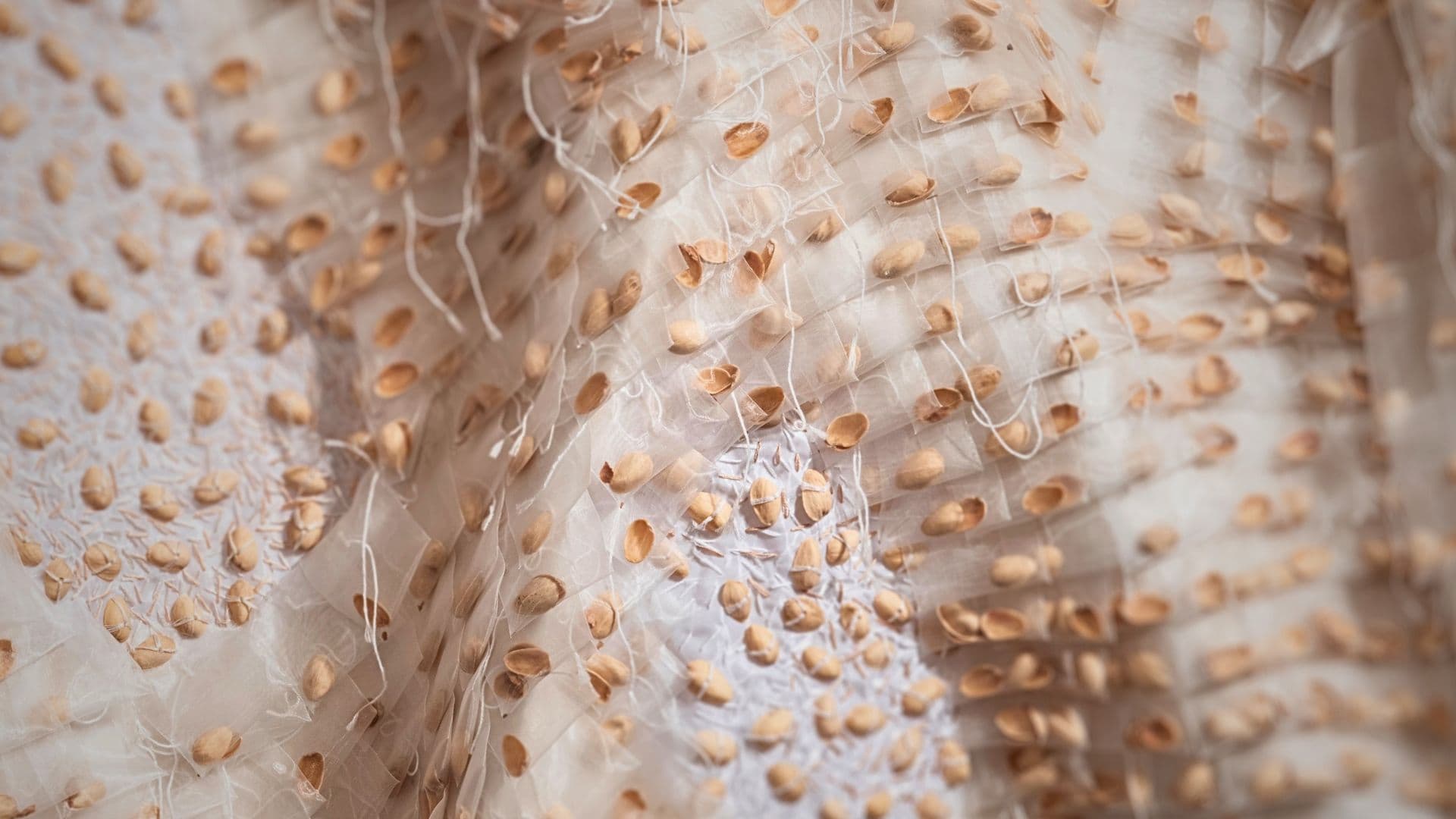
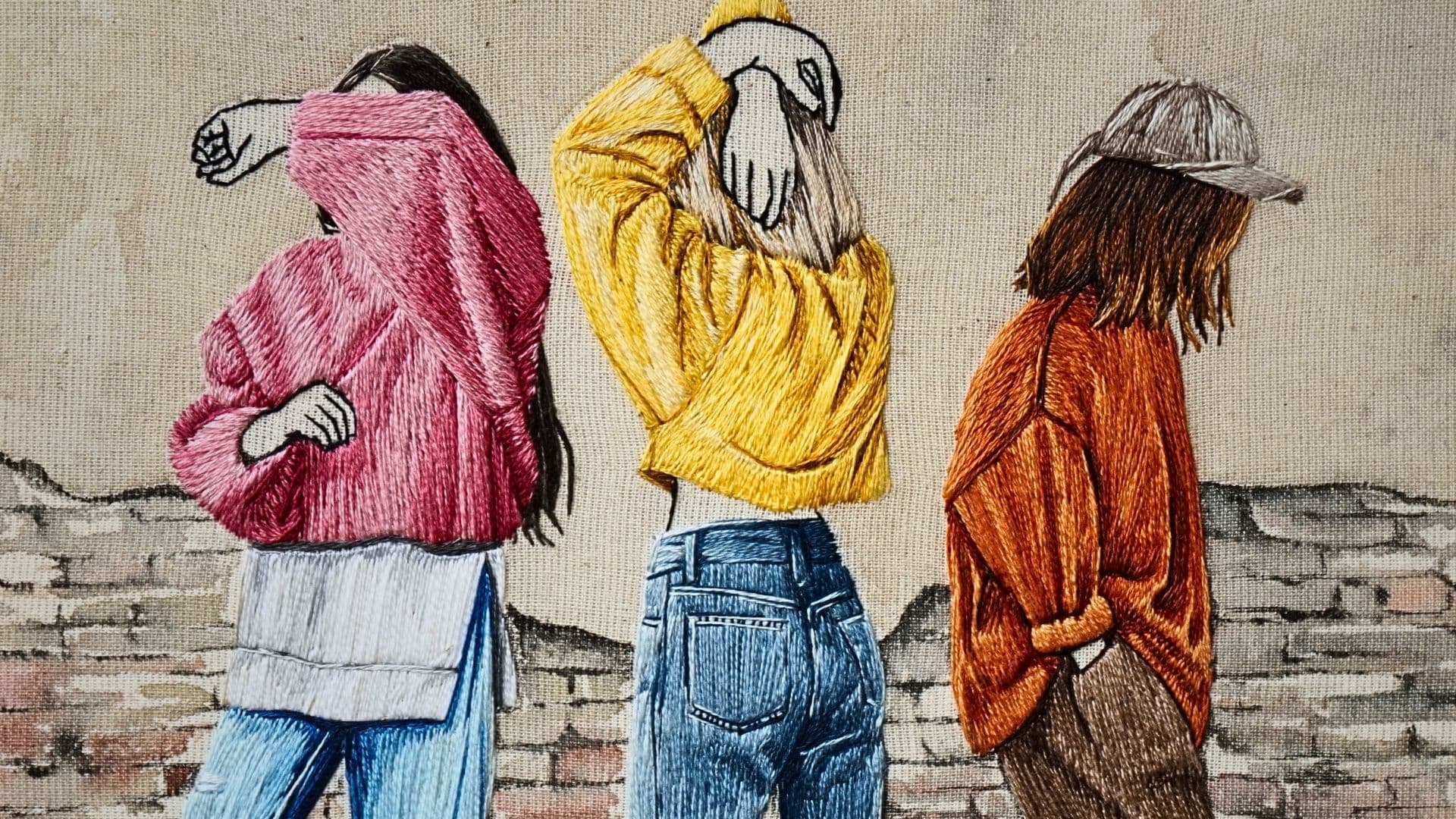
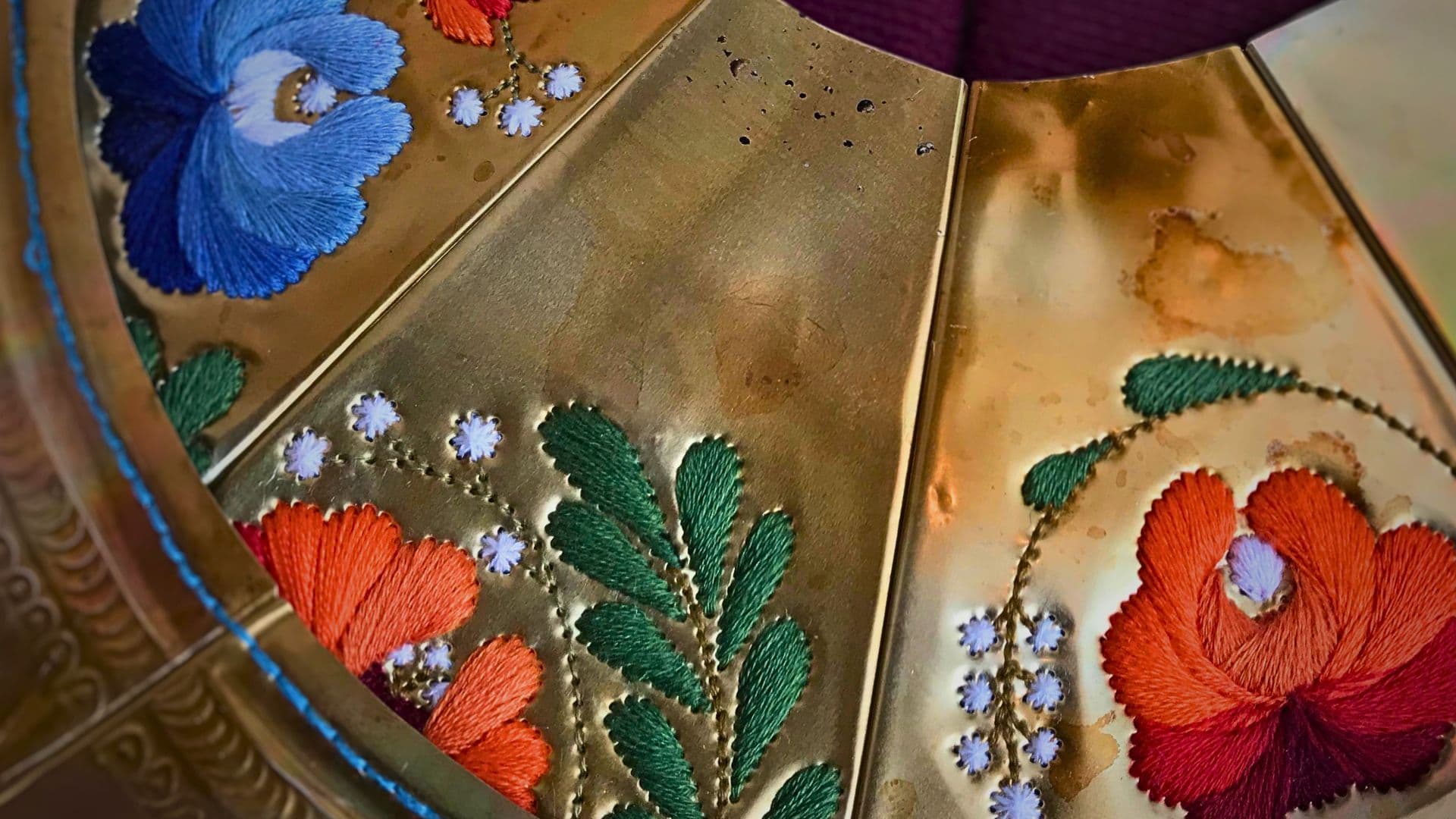
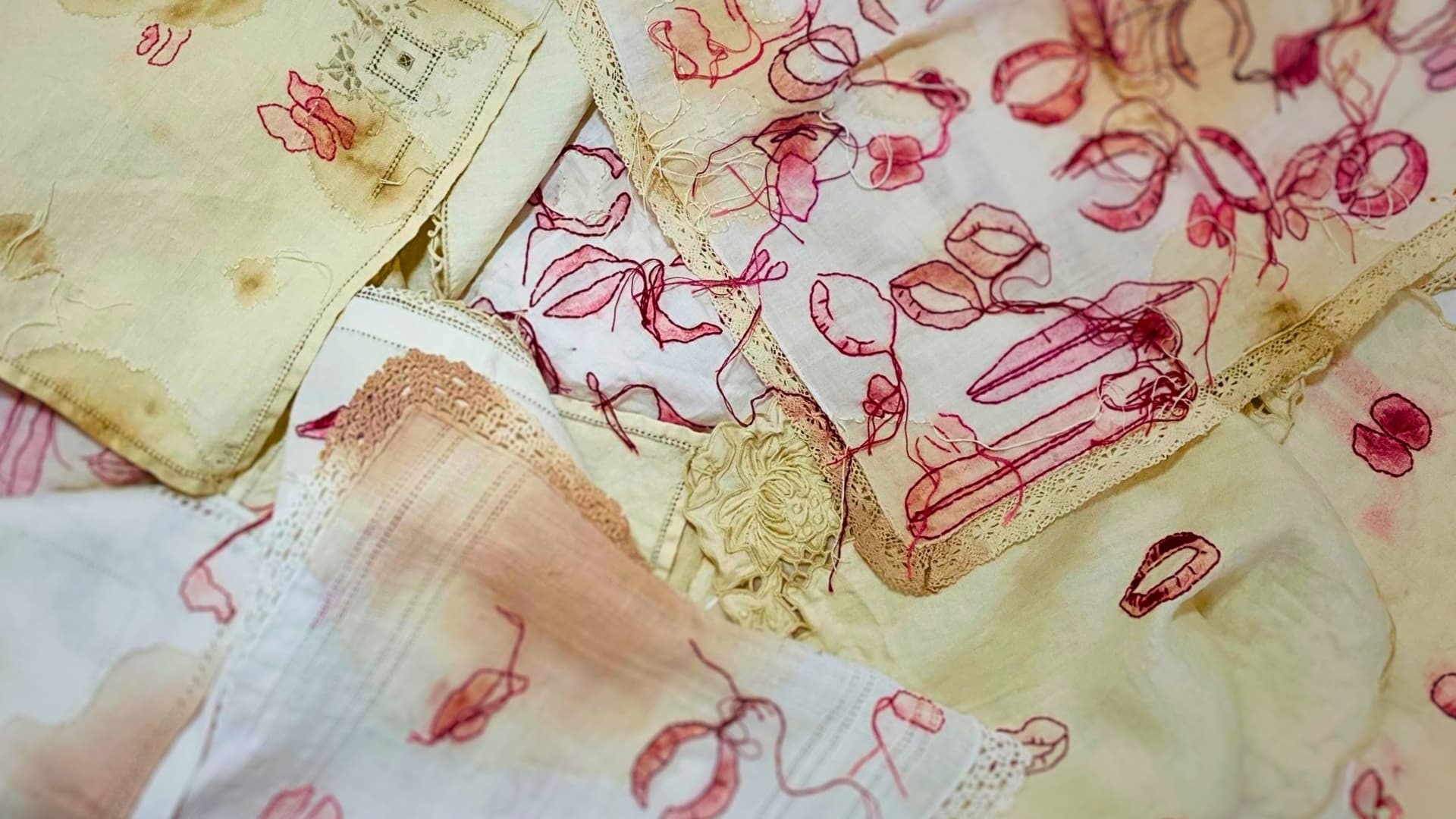
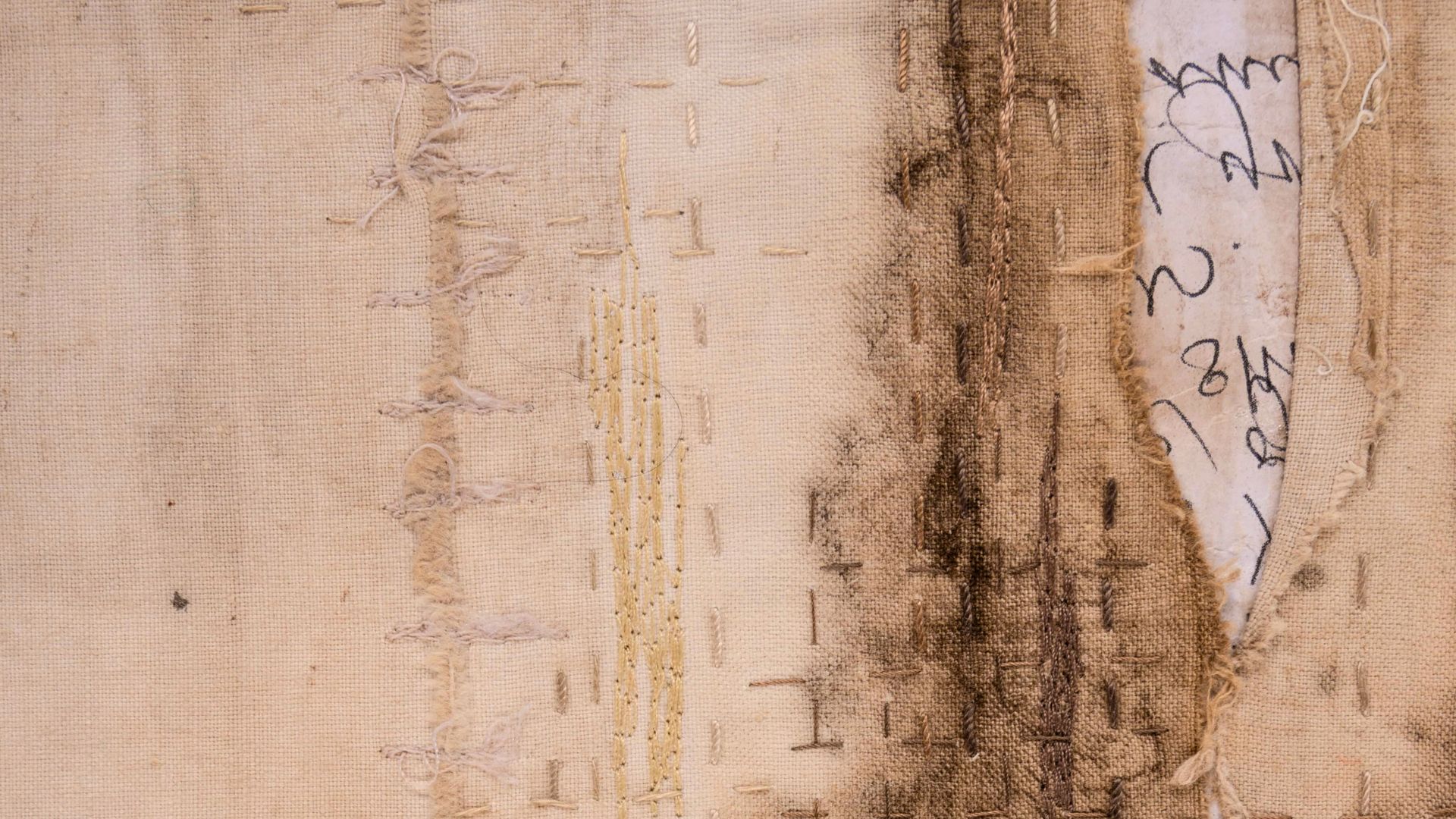
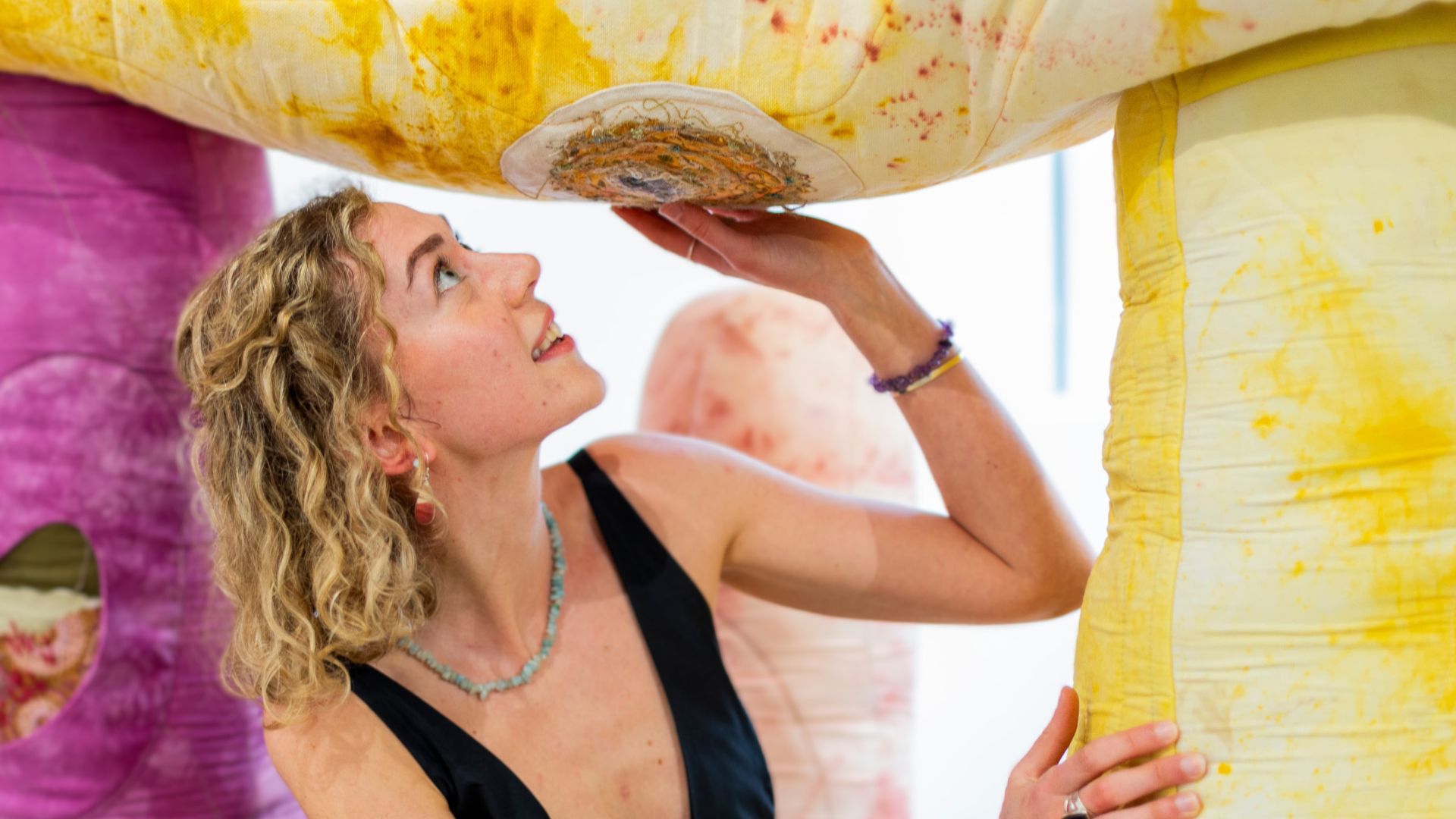
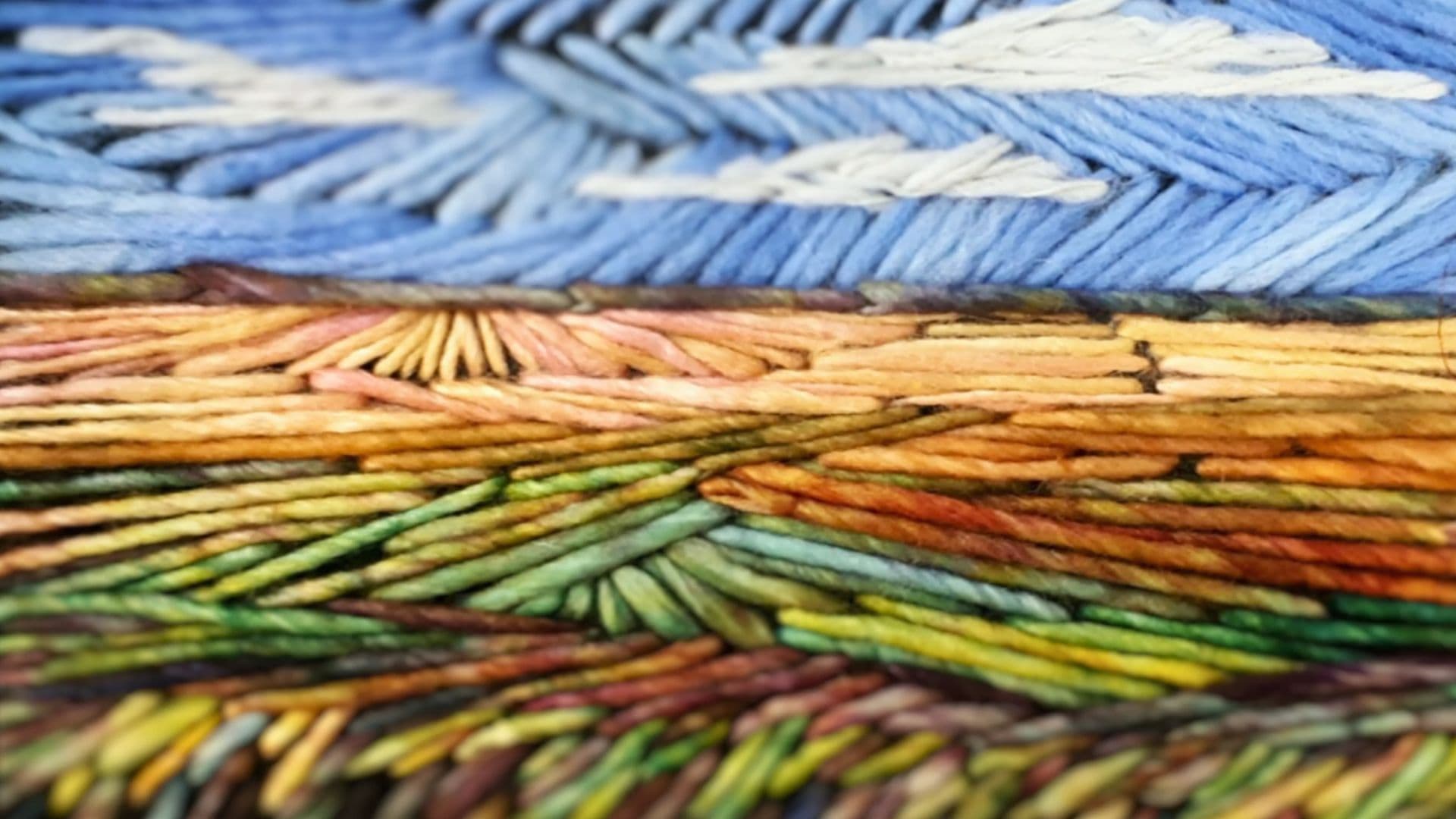
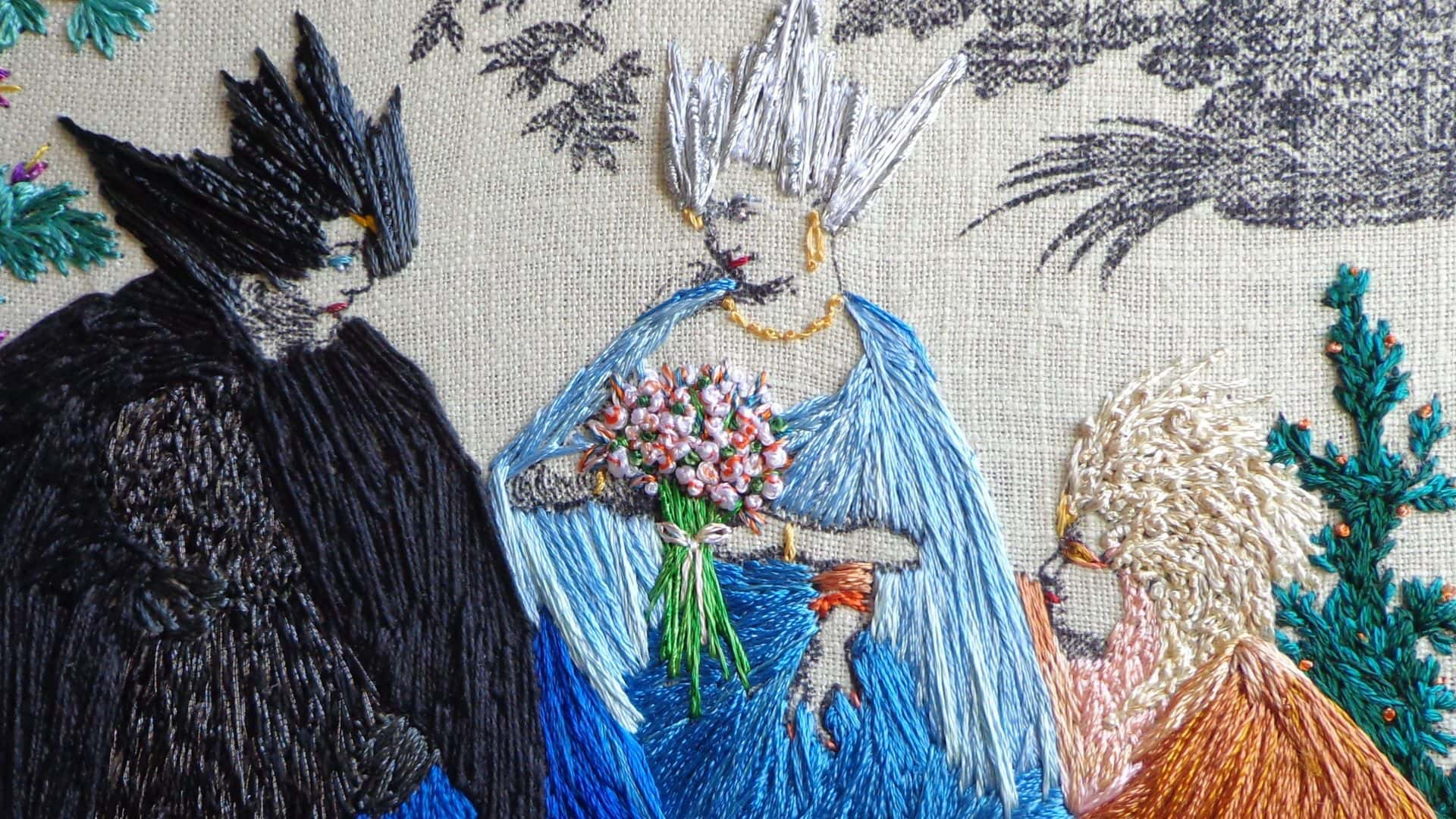
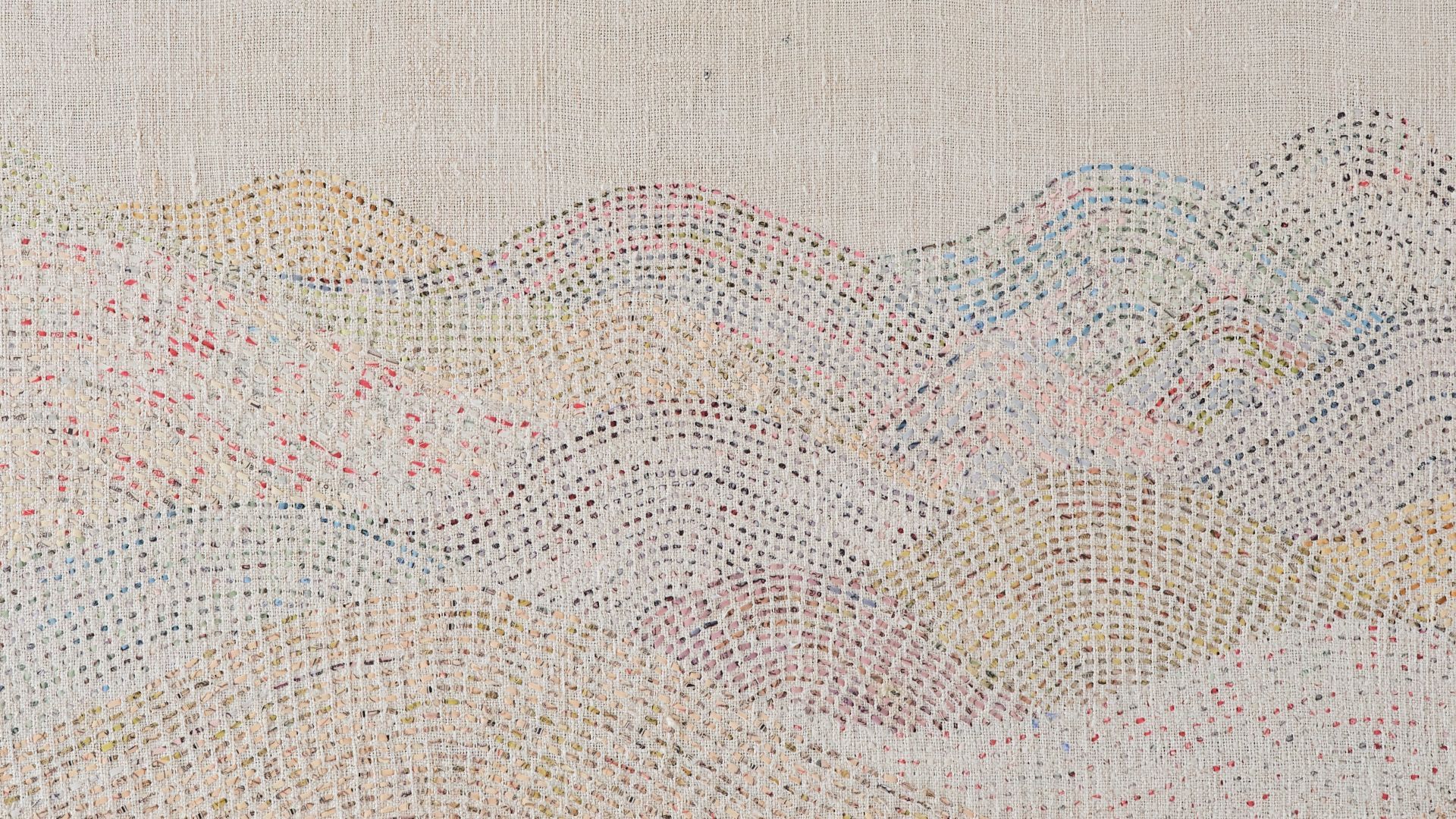
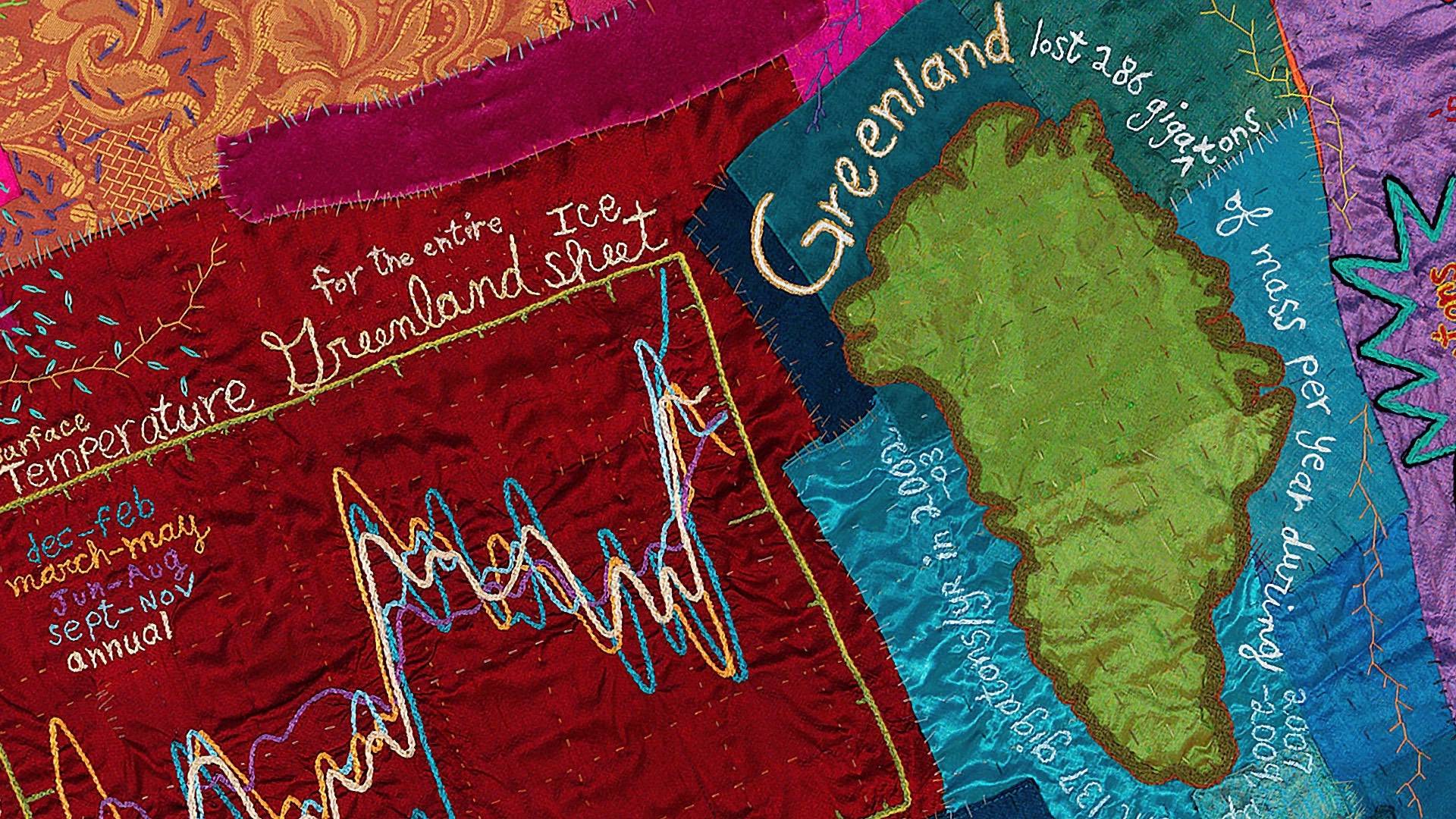
5 comments
Angharad
Your work has taken my breath away – beautiful – thank you
Asta Levinson Persson
Underfur underful ❤️
Carys Anne Hughes
I did not struggle in The same way but I have come accross negativity and I could relate to the article of Joke’s struggle.
I completed the Embroidery BA at Manchester and graduated in 2004, my love of textiles came from a need to express myself, however without any income, I turned to found cloths and old toys, To me any object made creatively fuelled by ideas is Art, there was a huge amount of hierarchy snobbery around which disciplines you were from with painting and sculpture seen as Art, textiles seen as less. Much the same as Joke my childhood shaped my opinions my father was a painter/sculptor and I had tried to express myself in these mediums but it just did not click with me. I found the hierarchy and snobbery within Art Laughable if you have to defend what you do your already in the mindset that your not as good?
I had something to say and my choice of medium was cloth and found objects.
When I started to use tactile materials and found inanimate objects to tell my stories using stitch I felt that my work came alive.
It is harder to sell work when it is not a painting or traditional sculpture but my need to make Art was never for financial gain, and I have had several exhibitions and worked as a freelance artist for over 10years. I have taken a break for the last two years as financially I’ve had to concentrate on the 9 to 5 this was a welcome head space for me that was needed my Art was no longer flowing and felt forced and I was never going to lie to myself or anyone else I just was not feeling it.
This last month I have started picking up bits of my Art samples and playing with ideas….. I now have a plan to start again thank you for your emails it is inspirational that others also face struggles.
Lollipop
Wow lots of info
Annvollum
You are such an inspiration Joke. It has been exciting to see how your work has developed. What an interesting interview. Looking forward to seeing what comes next. Happy New Year.